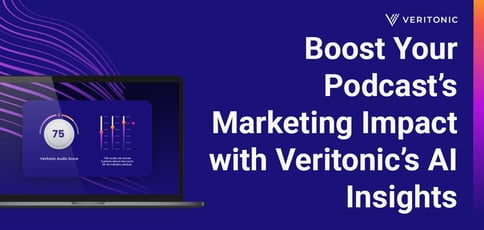
TL; DR: In a world teeming with podcasts, traditional podcast platforms sometimes lack the measured insights needed for hosts and brand managers to make purposeful creative decisions. Enter Veritonic, the industry’s comprehensive audio analytics and research platform leveraging artificial intelligence and machine learning (AI/ML) for in-depth research, testing, and measurement of audio campaign success. We chatted with Scott Simonelli, Founder and CEO of Veritonic, who told us this isn’t just about content — it’s about understanding your audience on a whole new level.
Let’s be honest: We’ve all thought about starting our own podcast at least once, hoping all it takes is a good topic and a winning personality to lure in loyal listeners. While these factors certainly hook people, what keeps them around is an entirely different beast.
Because podcast listeners are among the most engaged audiences, there’s a careful method behind creating appealing content, obtaining subscribers, and getting your brand out there to your target audience. That may be why audio advertisements are 4.4 times more effective than display ads and why 78% of podcast listeners have used YouTube to consume podcasts.
In simple terms, these strategies can be boiled down to good marketing — but it also entails a combination of researching, testing, and measuring demographics, trends, and audience responses.
These are critical because consumer behavior isn’t always predictable: What resonates with one demographic may not necessarily impact another, and a campaign that thrived during COVID-19 may not yield the same results in 2023.
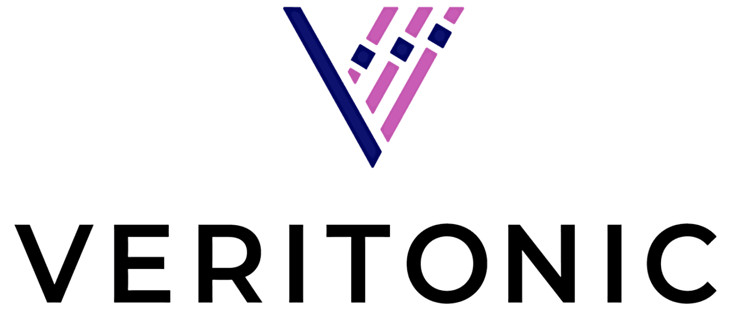
This is where platforms like Veritonic come in. Veritonic is an audio research and analytics platform that helps you better gauge how effective your audio strategy is among your audience, how you compare to competitors, and how you can continuously optimize your audio campaigns for increased ROI.
With more than 2 million podcasts on the market today, how your ads reach and respond to your audience makes or breaks its success. Scott Simonelli, the CEO of Veritonic, summed it up best: “There’s nothing you’re going to remember for as long and with such strength as with audio.”
The Tonic Piece Behind a Podcast’s Success
Veritonic is an audio measurement platform that uses AI to help brands increase their return on investment (ROI) and reach more people with a greater, more intentional purpose.
But it’s not just about which topics are interesting; it’s about how your audience perceives your entire brand. So, whether you’re a marketer, advertiser, agency or publisher, Veritonic can be your one-stop resource for making decisions that directly impact your revenue.

“It’s a rare opportunity where one platform gives you all the actionable data you need, so our mission is to be the independent leader of audio measurement for the full funnel,” said Scott.
Unlike conventional analyses, Veritonic delves into the subtleties of voice, tone, and intent, providing insights as well as measurable and quantifiable data. This allows its users to track outcomes and gain a comprehensive understanding of how to harness the power of audio advertising in the ever-changing marketing and consumer behavior landscape.
Veritonic’s audio measurement platform is comprised of three key pillars: research, testing, and measurement.
1. Research: See What Your Demographic Likes Best
Scott emphasized that researching your audience’s preferences before launching your campaign is critical.
“The research portion helps you understand what types of audio content you should use, what fits within your brand, and how your audience responds,” he said.
But you can go beyond just understanding your audience. Veritonic’s Audio Ad Search tool seamlessly identifies trends, including which voice choices and ad lengths are popular, so you can make informed decisions driven by the successful strategies of your competitors.
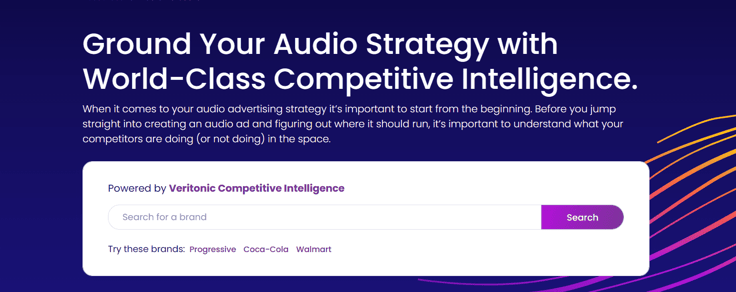
“This research component helps brands understand how people respond to their audio content, whatever that might be,” Scott added. “The world of audio is still relatively immature regarding data and measurement. While there are a lot of proclaimed ‘data-driven’ marketers out there, the truth is they’re probably not — not yet, anyway.”
For example, say the online talk therapy company Brightside wants to see how BetterHelp performs and which podcasts their ads are featured on. Veritonic’s Audio Ad Search tool reveals that fewer individuals respond to BetterHelp’s ads when they’re featured on history podcasts, while a more significant response is observed when they’re placed on sports podcasts.
2. Testing: Survey and Refine For Maximum Impact
Testing your audio creative is your secret sauce for a campaign that resonates. Veritonic allows you to explore how your audio content impacts authenticity, familiarity, energy, and mood through creative testing and brand lift measurement.
“Brands can understand what works and what doesn’t before running a campaign,” said Scott, explaining that with Veritonic, you can test tons of creative choices, including:
- Which word usage elicits the most engagement
- Where brand mentions influence listeners the most
- Where music resonates best
- Which call-to-actions have the highest response
- How many times you should mention your brand name
Think of it this way: Access to this information is like having an on-call focus group that helps you fine-tune your creativity until it aligns perfectly with your brand.
Measurement: Understanding Campaign Performance
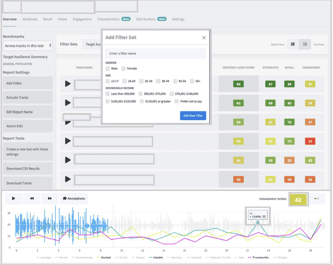
Whether you’re gauging brand awareness, favorability, or purchase intent, Veritonic’s measurement tool takes the guesswork out of understanding the impact of your audio creative.
“Knowing how you stack up against other people in your industry or wherever else you invested audio, whether that’s music for a TV ad or a streaming audio campaign, can tell you exactly why you’ve done all this testing and whether you’ve put your best foot forward,” Scott said.
This means deciding where to place your ads, how long they should be, and what creative elements work best.
You can also use second-by-second engagement data to unpack the nitty-gritty details of your impact, such as which words hit the mark, where brand mentions matter, and when the inclusion of music strikes a chord.
Introducing Audio Score, the M-LAL™ Smart Detection Tool
The Veritonic Audio Score is powered by the platform’s innovative AI and machine listening and learning (M-LAL™) capabilities.
The tool analyzes each creative to help advertisers make the most impact in the changing audio landscape. It uses a scale from 1 to 100, looking at emotional impact, how memorable it is, its ability to drive purchases, and its engagement.
“We use quantitative data to understand the human response to sound. Like there’s neuroscience for brain monitoring, we wanted to know how we can do that across large populations in a scalable way, where I can compare how a podcast ad performs in Boise, Idaho versus Berlin, Germany,” explained Scott.
Veritonic’s Audio Score goes beyond automated insights; it mimics human-like responses when examining audio content, distinguishing itself from traditional analytical tools by pinpointing emotional responses and factors influencing audience engagement.
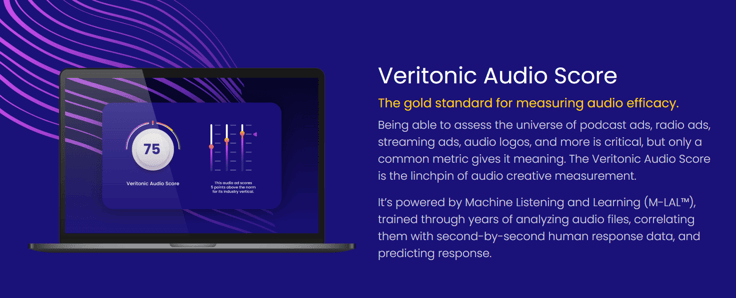
Here’s how it works: When Veritonic captures audio, it creates a unique fingerprint similar to how Shazam identifies songs. Veritonic then exposes this data to a diverse audience, standardizing their responses to various stimuli and predicting actions based on past behavior.
When a user uploads their audio assets into the Veritonic platform, it calculates a score for each of several categories, including emotional response, intent, likability, and more, while also being able to provide second-by-second measurement. Emotional responses span from happiness to sadness, while intent gauges behaviors before and after listening.
Plus, it can show you the audience’s response to certain creative decisions.
“See how someone feels in response to certain audio cues, like the ring of a cash register or a ‘Buy Now’ prompt, which can be more impactful than other elements in an audio-only environment,” Scott explained.
The journey of Audio Score has been a long one, Scott said, with years of meticulous training for the underlying AI. “It’s difficult to do, which is why we’ve been training it for about four or five years now,” he noted. “But now, the Veritonic Audio Score underpins everything we do.”
What’s Upcoming for Veritonic and Its Users
Veritonic recently released an array of innovative enhancements to its attribution tool, focusing on second-by-second data for enhanced measurement capabilities.
“We’re bringing some really big innovations to the audio measurement space, particularly the podcast streaming and audio advertising performance space,” Scott noted. “I think that’s an area of opportunity because there’s a bit of a baseline established now.”
Podcast attribution quantifies the conversions generated by podcast advertising. For example, which of your podcast ads drove the most clicks? Traffic to your site? Items added to a cart? Conversions?
There are two types of podcast attribution: outgoing and incoming. Outgoing attribution helps advertisers measure how well their ads within podcasts are performing, while incoming attribution helps content publishers see how effective their marketing is at getting new listeners for their shows.
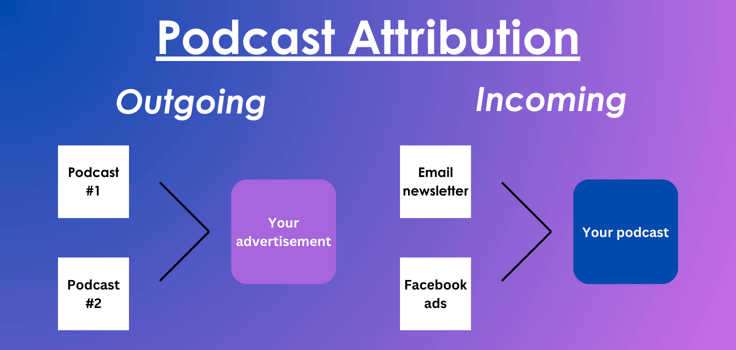
Scott stressed the importance of attribution data for all brands engaging in audio advertising. Without it, you can’t assess your investment’s effectiveness in creatives.
“You’re just flying blind without it,” Scott emphasized. “Since audio and podcast advertising is still relatively new to some companies, they need the discipline to have an independent research platform in a market where it’s still a new concept.”
Scott also noted that brands consistently view audio advertising as a valuable and worthwhile opportunity despite people’s tragedies and hardships — such as the COVID-19 pandemic or the rising cost of living.
“There’s so much excitement around what’s happening in audio. Our weathering of the storm showed a space with tremendous potential, and we’re starting to see more enterprise-grade, global solutions come into play,” he said. “We continue pushing that bar higher, and I’m really looking forward to all that 2024 holds for our company and the audio industry at large.”



